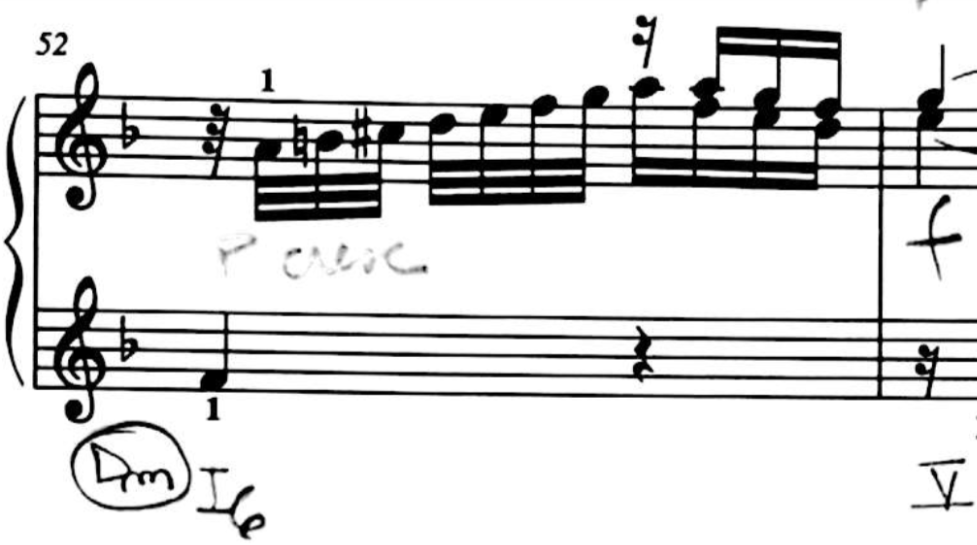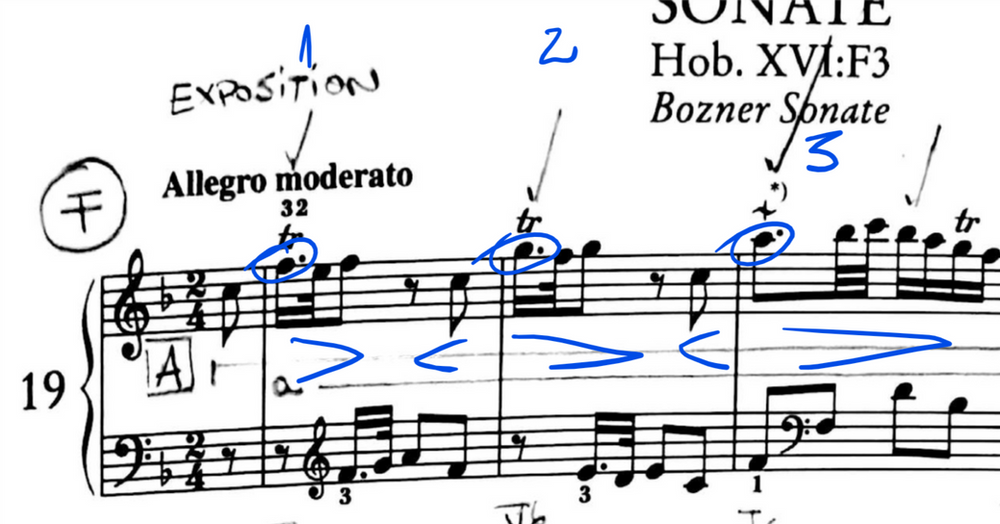Haydn Sonatas, Uncategorized
Haydn Sonata in F Hob. XVIF3 – 1st movement / development

DEVELOPMENT
This section opens with theme A transposed to the dominant tone as expected. It is then followed by an episode focusing on the tail of the first episode’s motive. It basically utilises the last descending section of the passage anticipated by two semi-quavers from episode-one’s ascending gesture.

These gestures are used in contribution with the build-up of episode-one’s main motive recapitulation.
Haydn will instate a longer sequence of repetitions on this motive, before moving into a powerful descending passage twice as long as the one seen in episode one. After a short interludium, we run into the second “minore” in Fm, after which he introduces an innovative short modulation passage with thirds. These sequences of thirds were firstly introduced at the beginning of the development’s episode. They are fully developed and used extensively at the end of the section as a modulating climax towards the recapitulation.
RECAPITULATION
The recapitulation happens almost in a literal way. In the CODA we can see some changes in the registers used for each repetition. The fact that Haydn chooses, to move towards the bass in the last passage helps incrementing the sound density and contributes to the consolidation of a more powerful closure for the piece.

INTERPRETATIVE OBSERVATIONS
As a proper example of early classical writing, this sonata requires a lot of our input as interpreters. Firstly, because we are performing it in a piano, which will add a wealth of dynamic variances and, thanks to the latter, because the writing is not entirely “complete”…
The piano will affect the way in which the piece flows by adding dynamic tendencies, we should make sure we do not add dynamic randomness instead. In a piece of this kind every single dynamic should be controlled. There is no dynamic plan set on stone but we can certainly make some assumptions based on the harmonic and morphologic characteristics of the piece.
INTERPRETATIVE EXAMPLE
We first should try and apply a bit of Schenkerian analysis and find out which ones are the main focal points. In the case of the first passage, the tonal bridge is clear. If we take bars 1 to 4 -theme A’s antecedent-, we run from F to A. The next step is to take a decision in regards to how we will deal with the dynamics applied to the grace notes.

Continues in our next WKMT release
The following movement can be found here:
https://www.piano-composer-teacher-london.co.uk/post/2017/01/27/haydn-xvif3-menueto
#Haydnproject #HaydnProject #pianolessonsforbeginenrs #pianolessonsLondon #adultpianolessons #pianolessonsforadults #adultpianolessons #pianolessonsforbeginners #pianolessonsforbeginners
